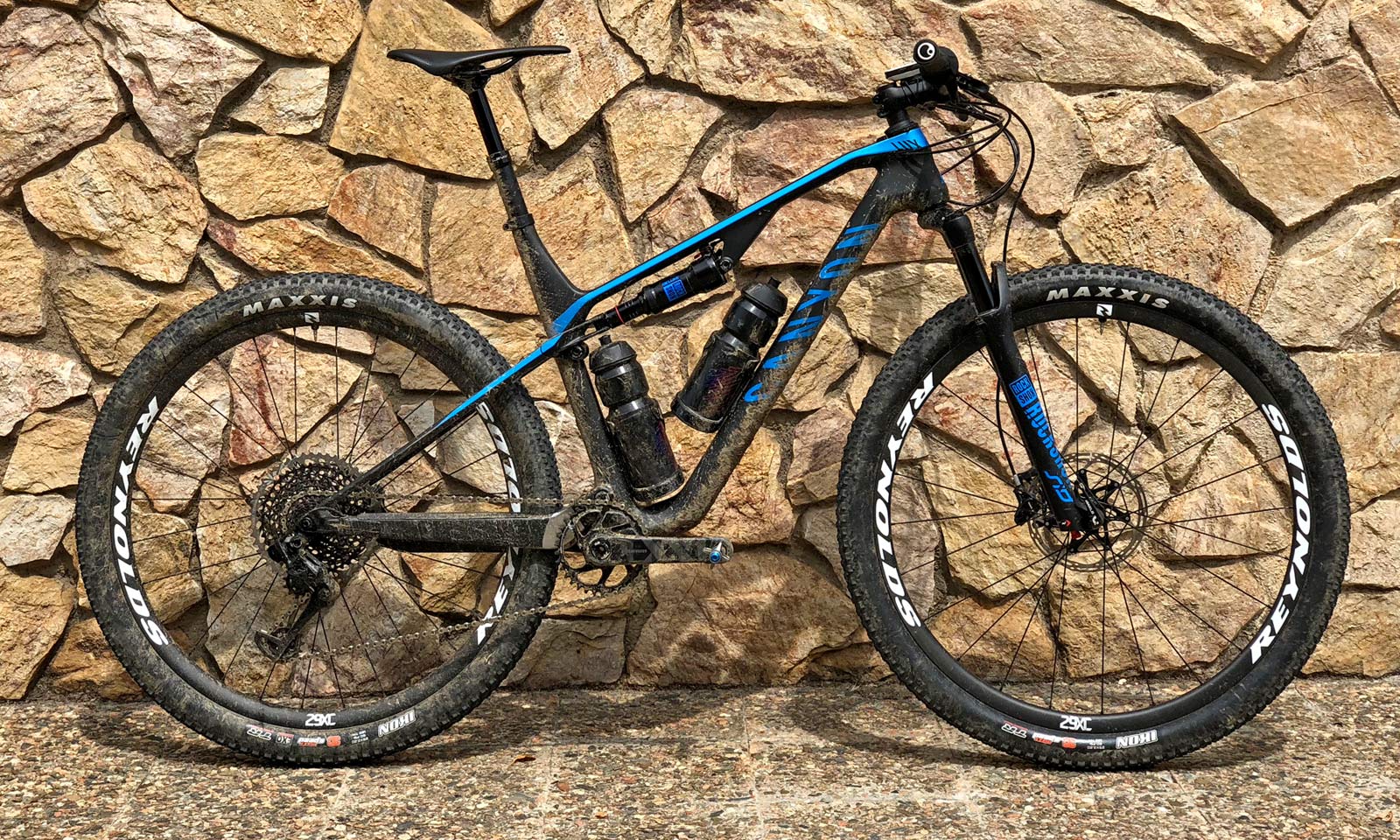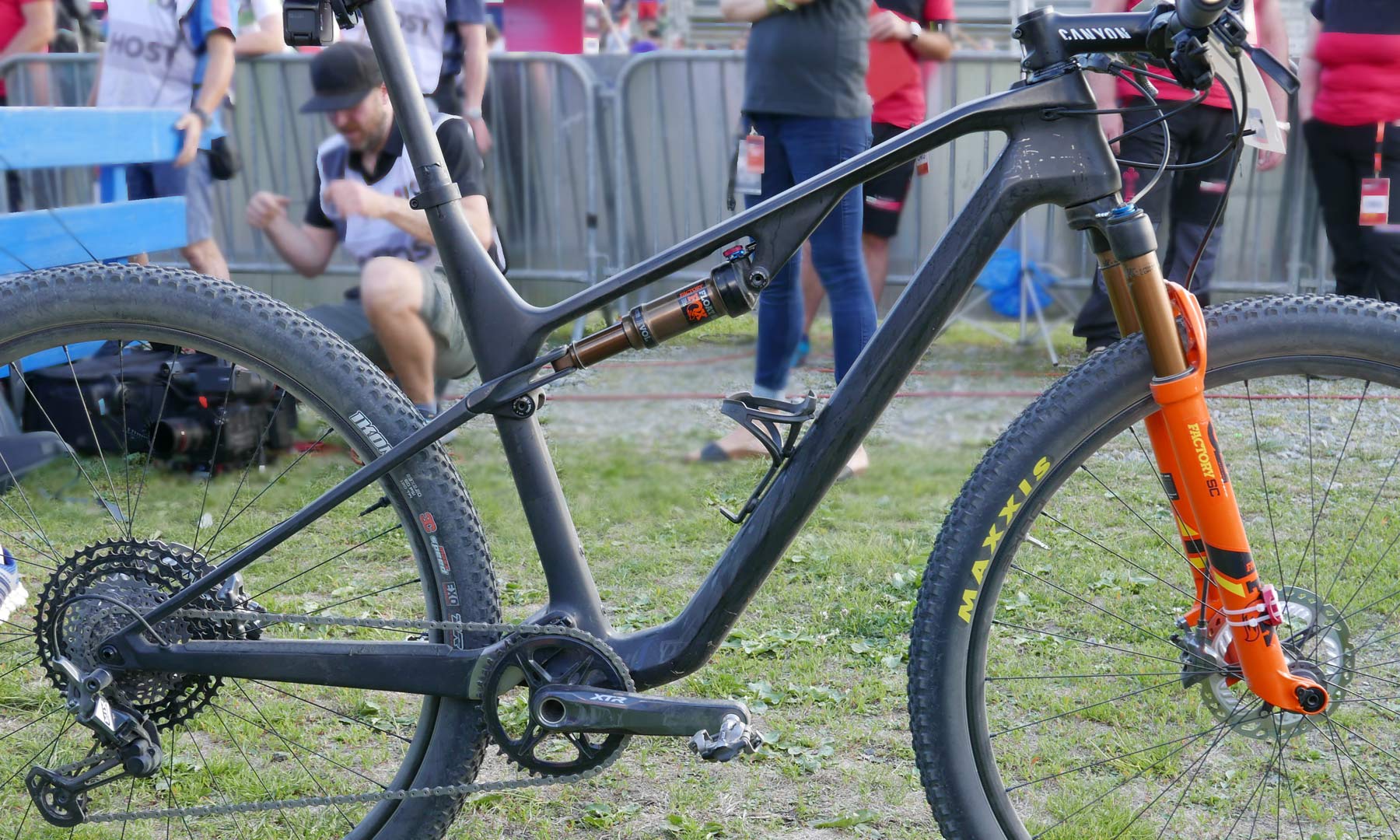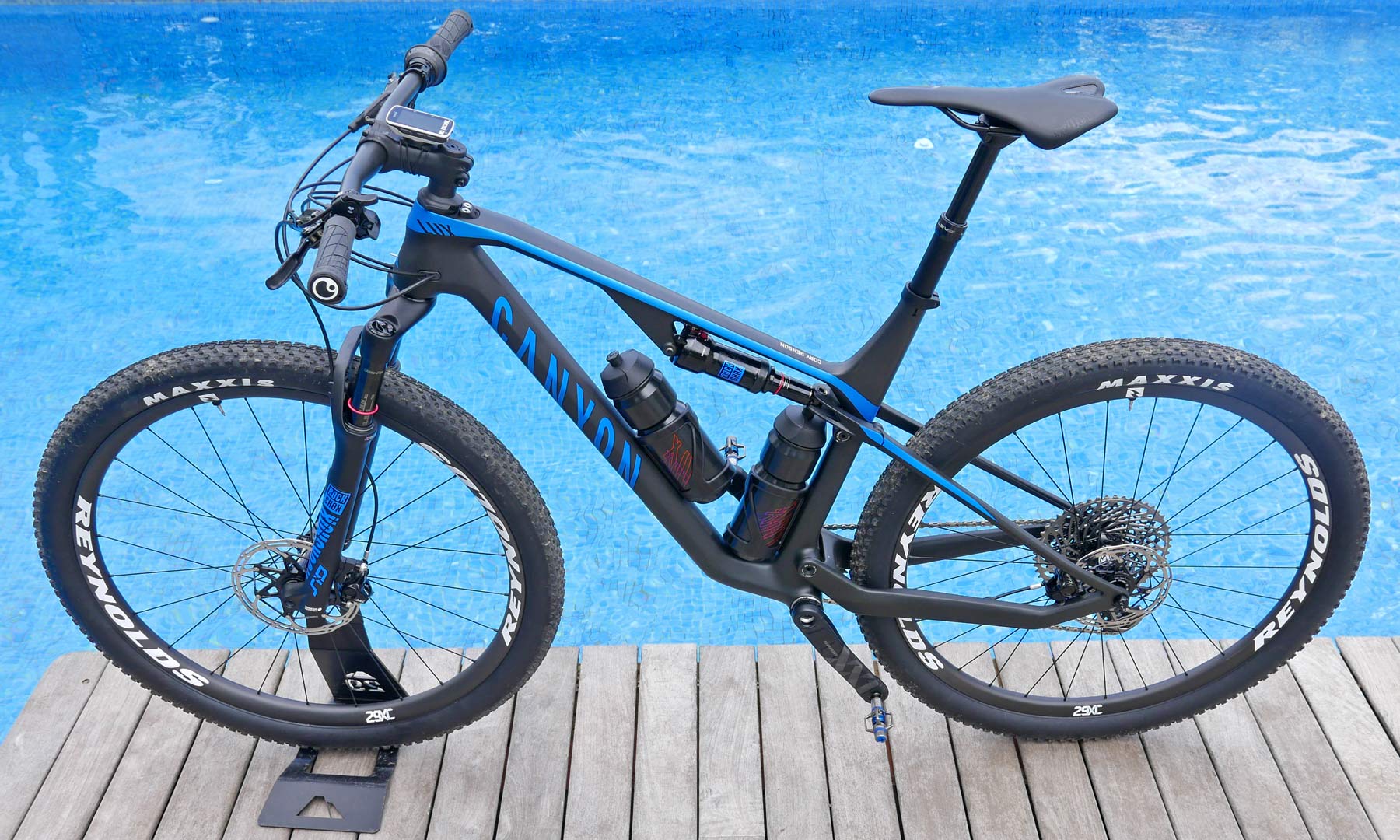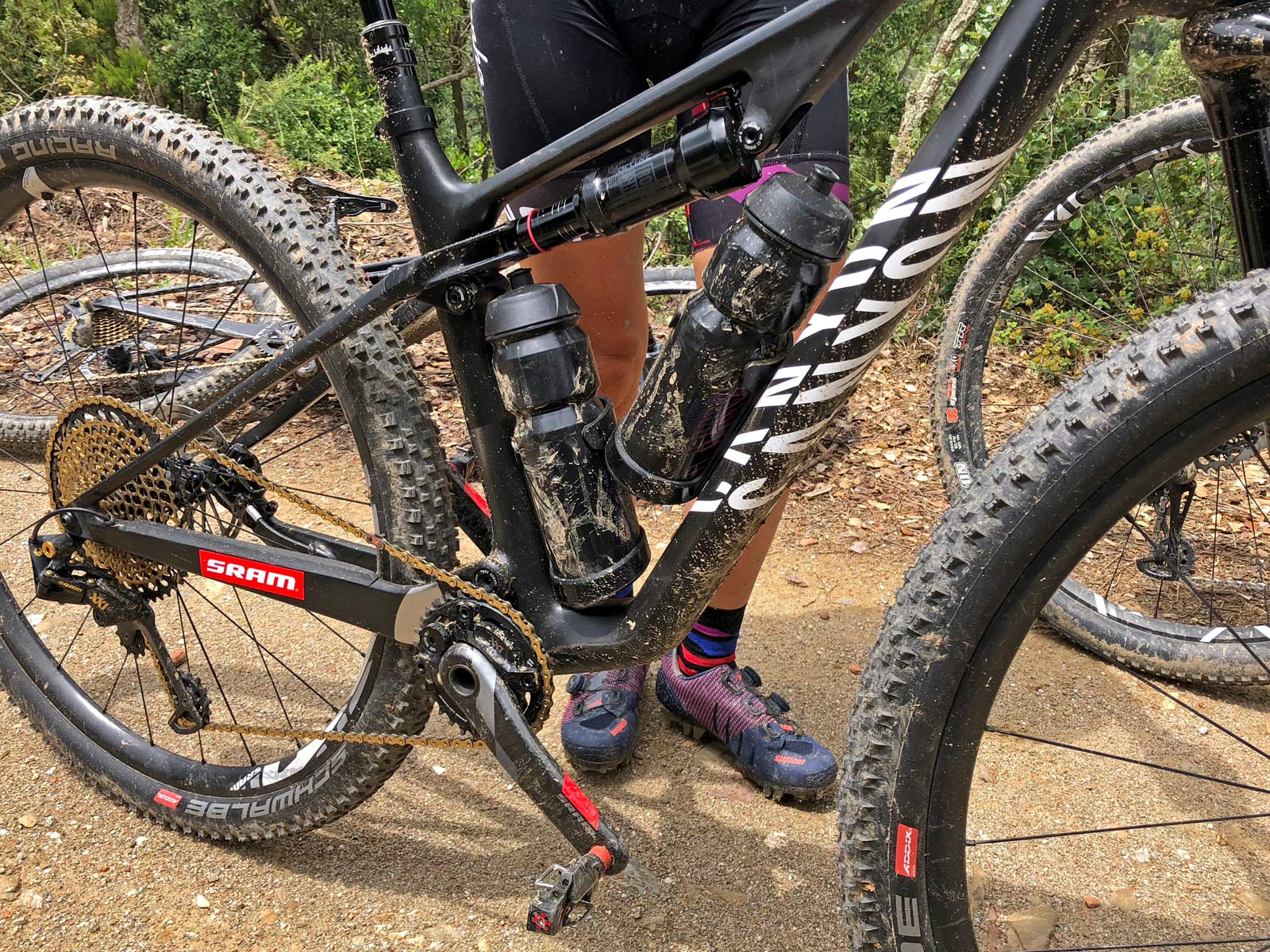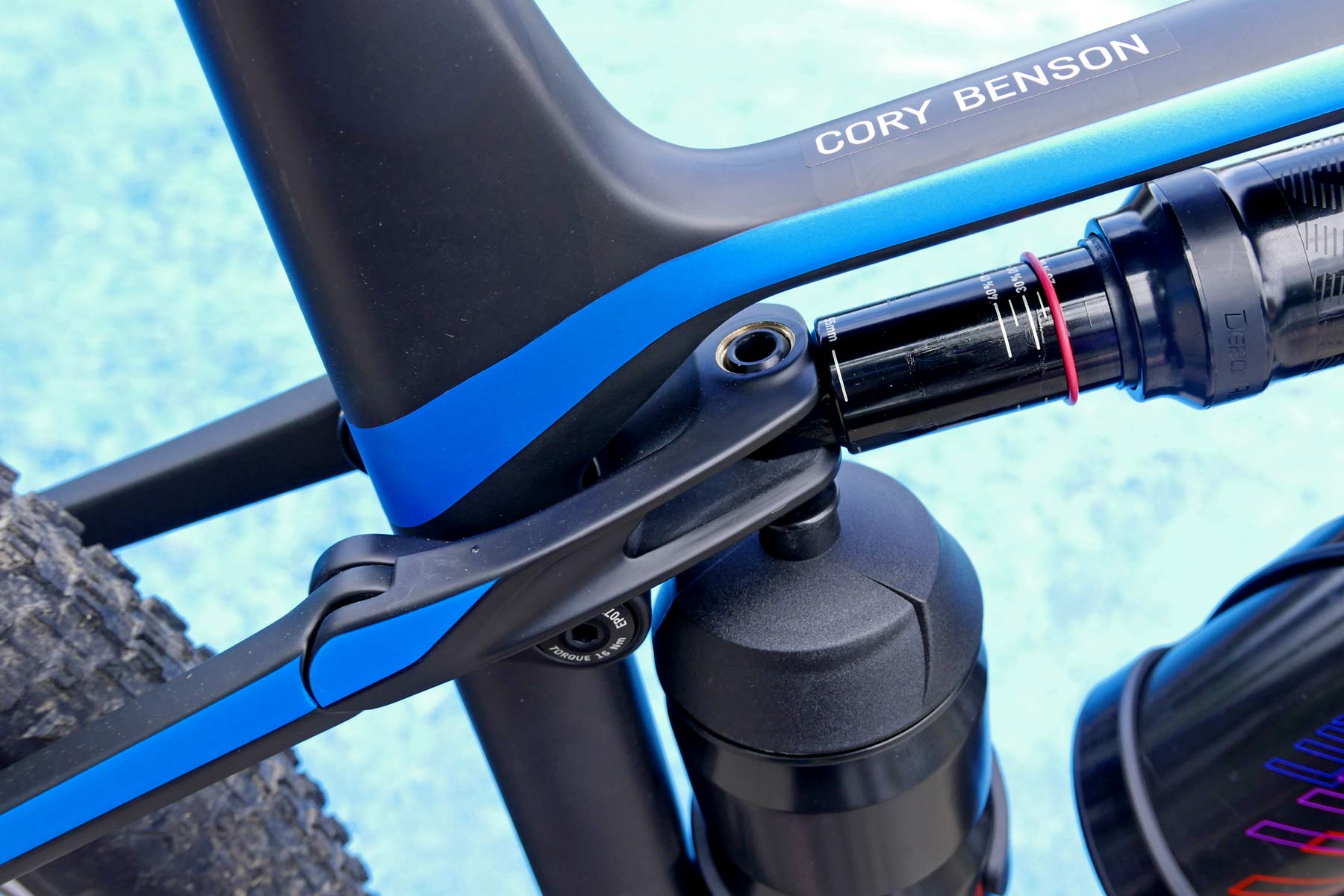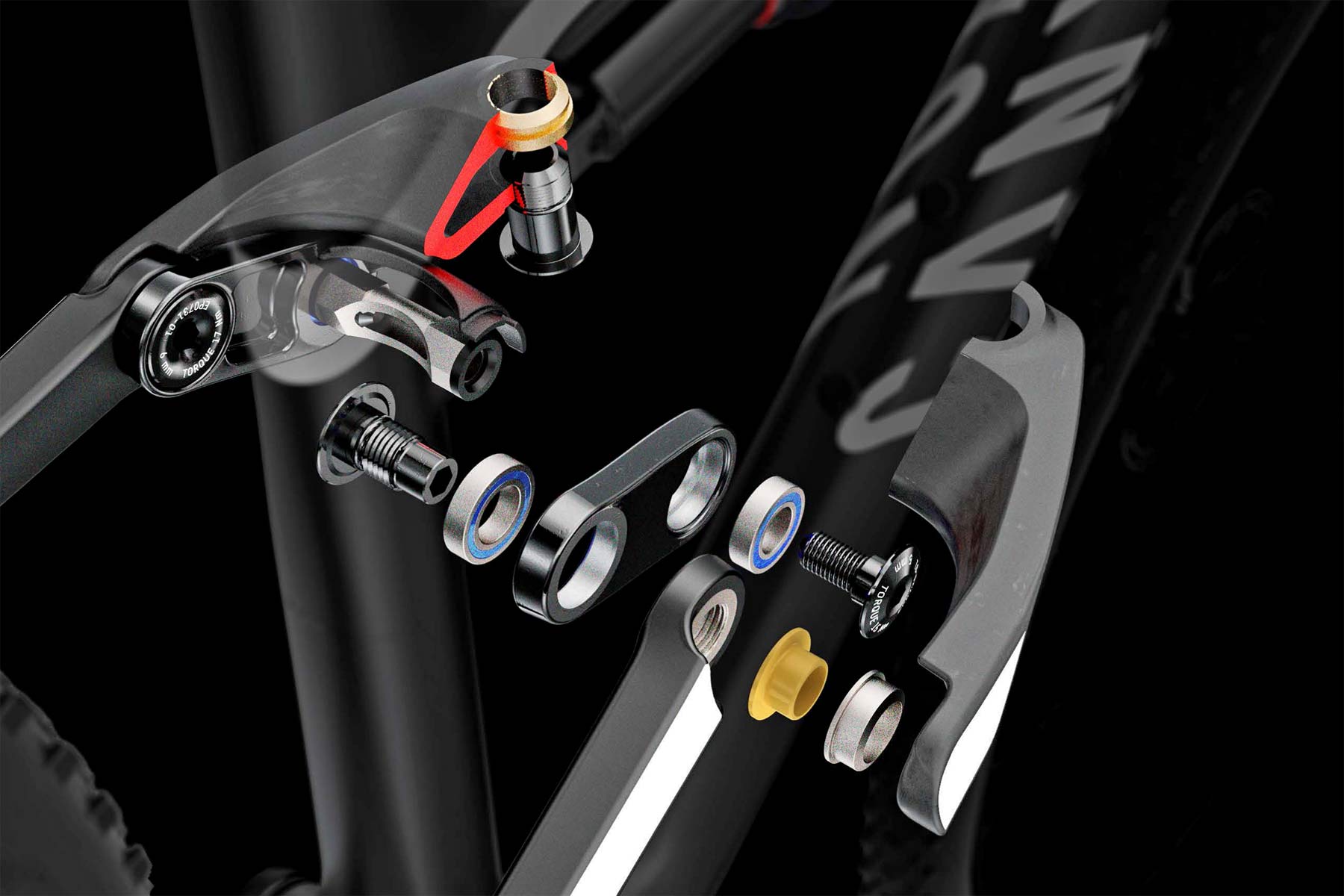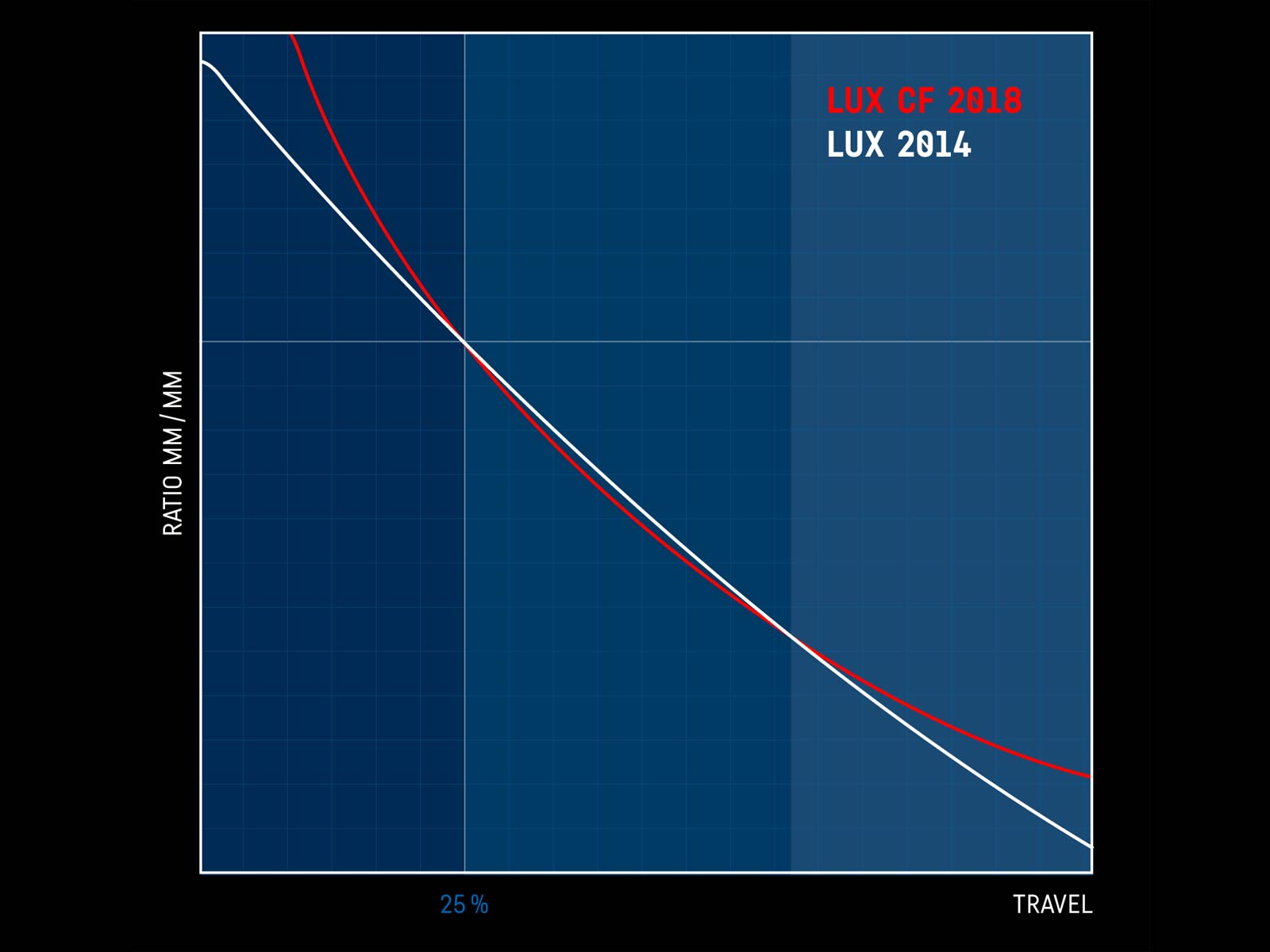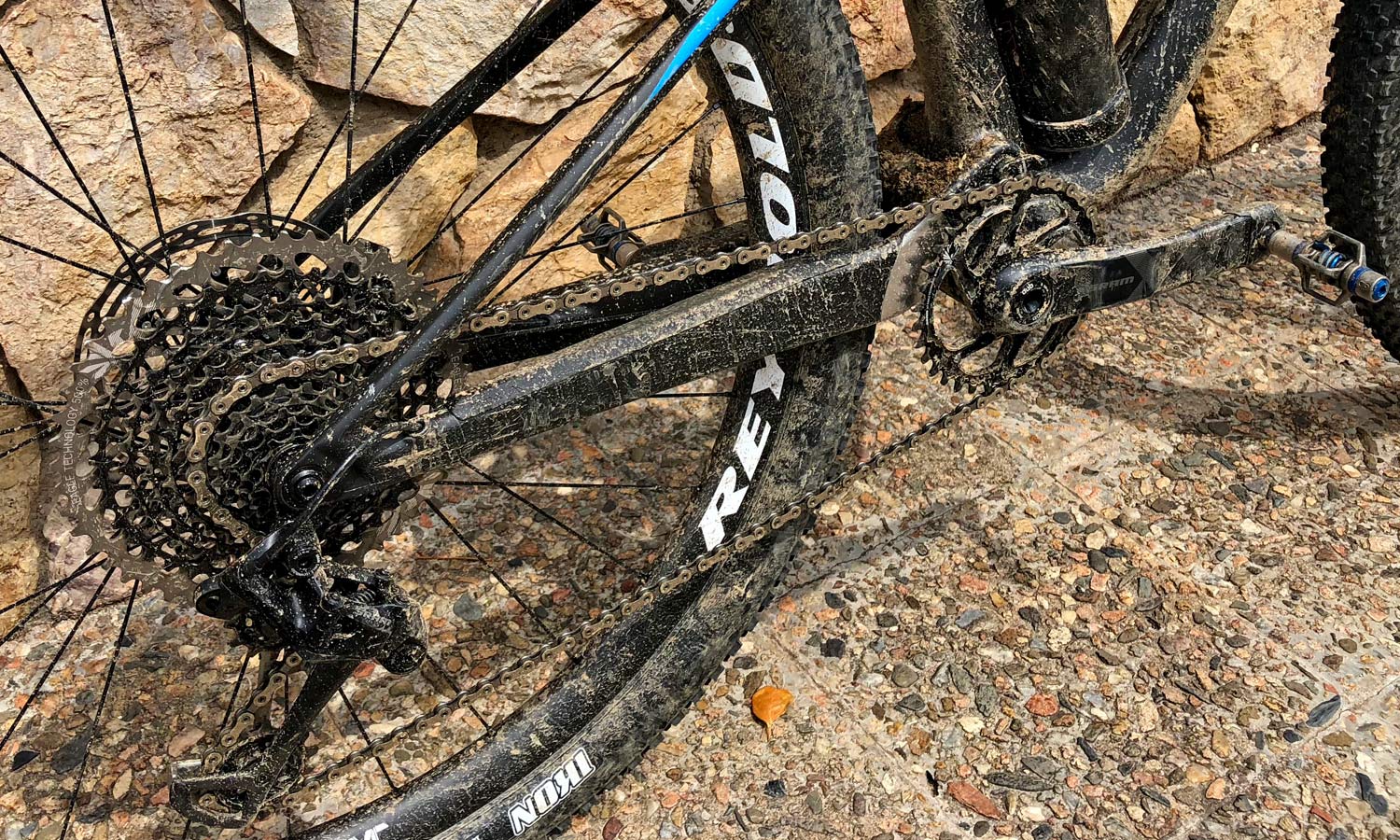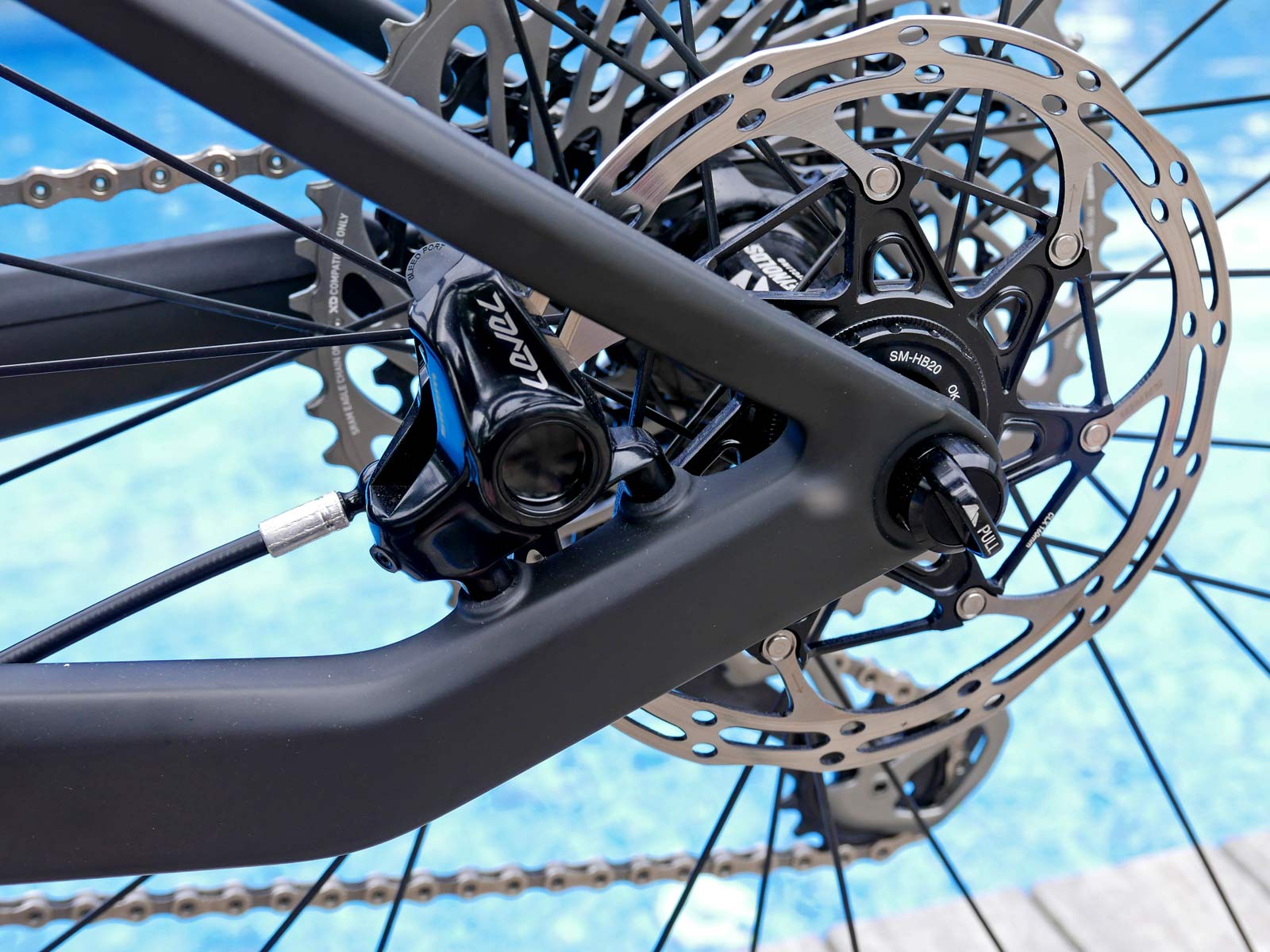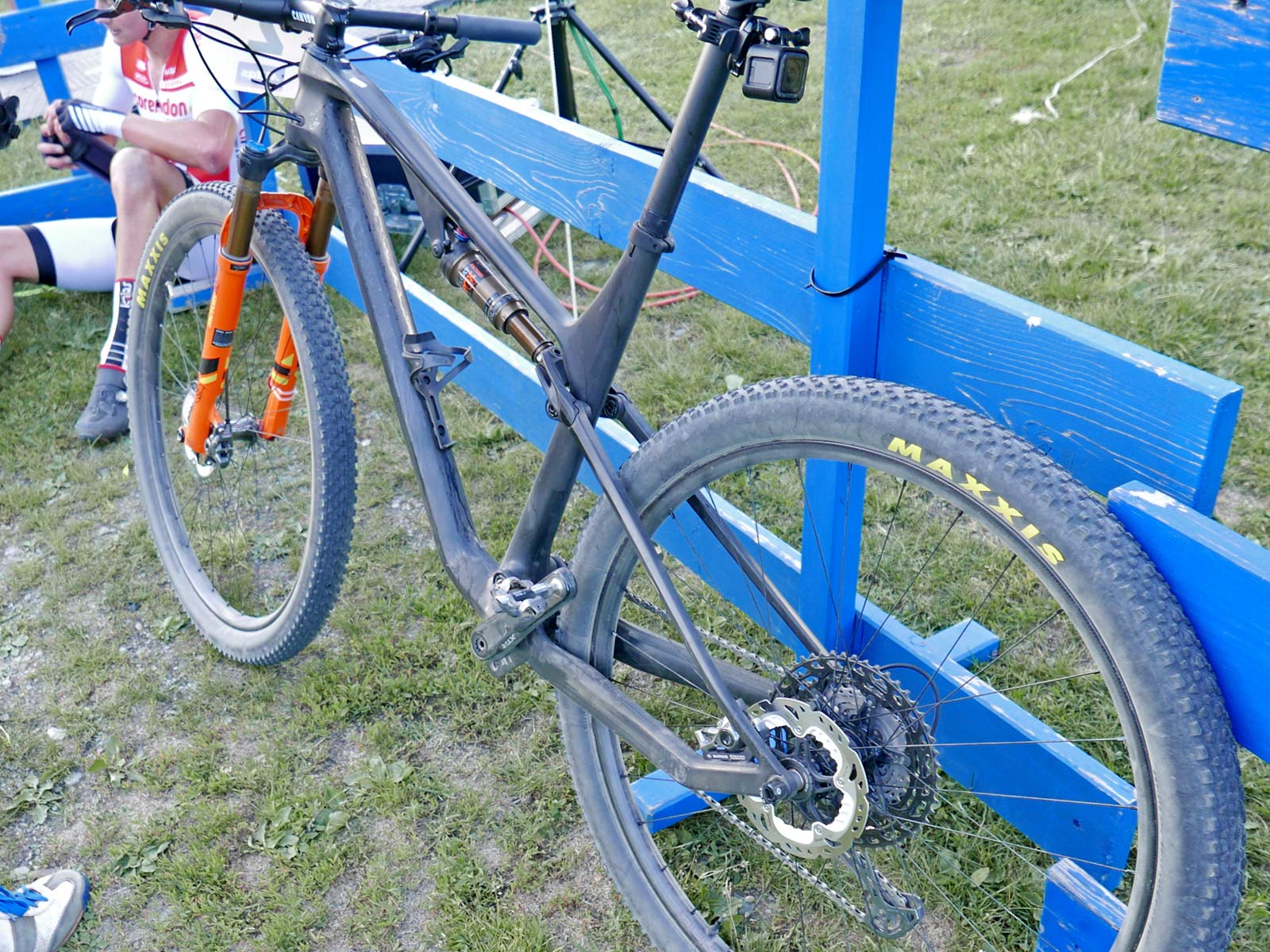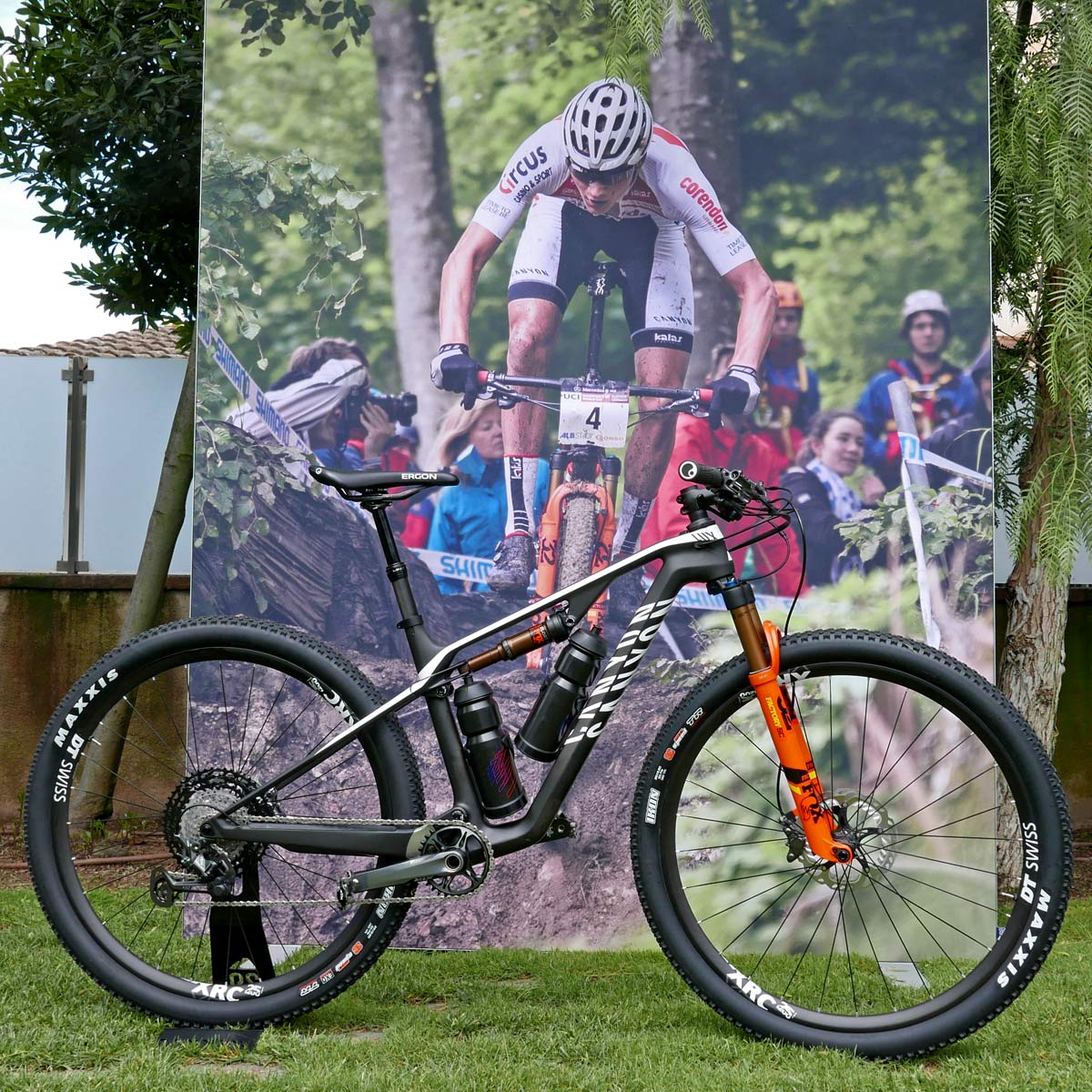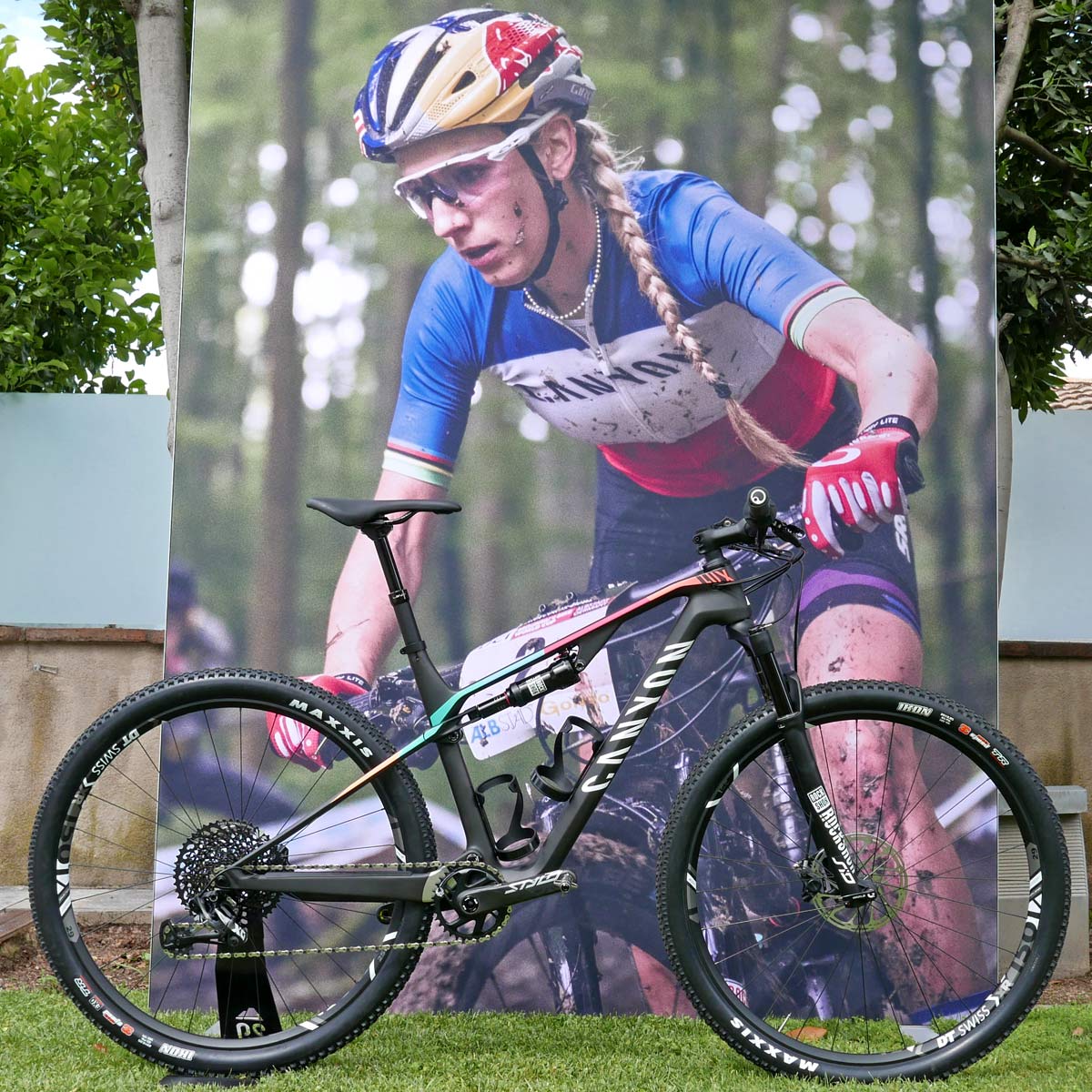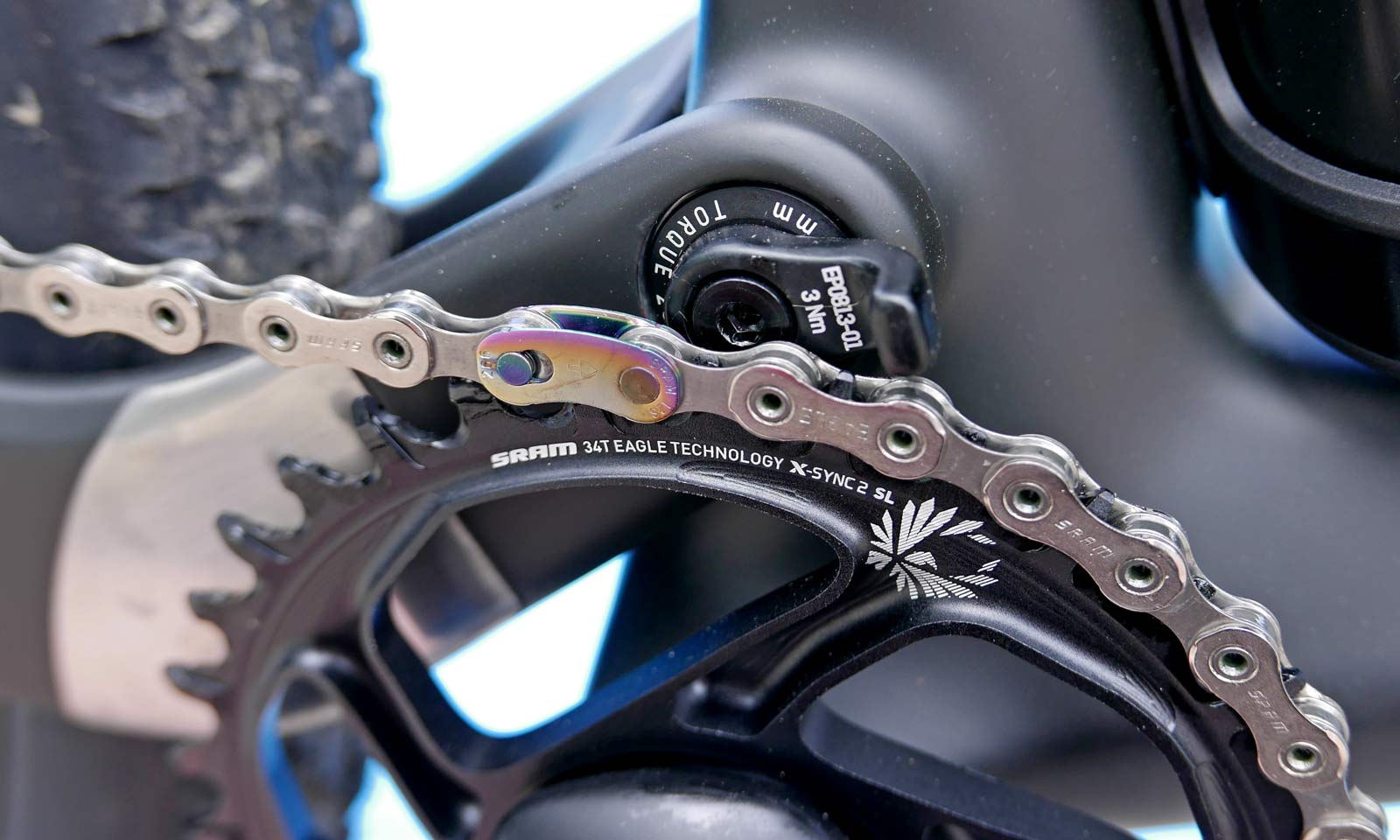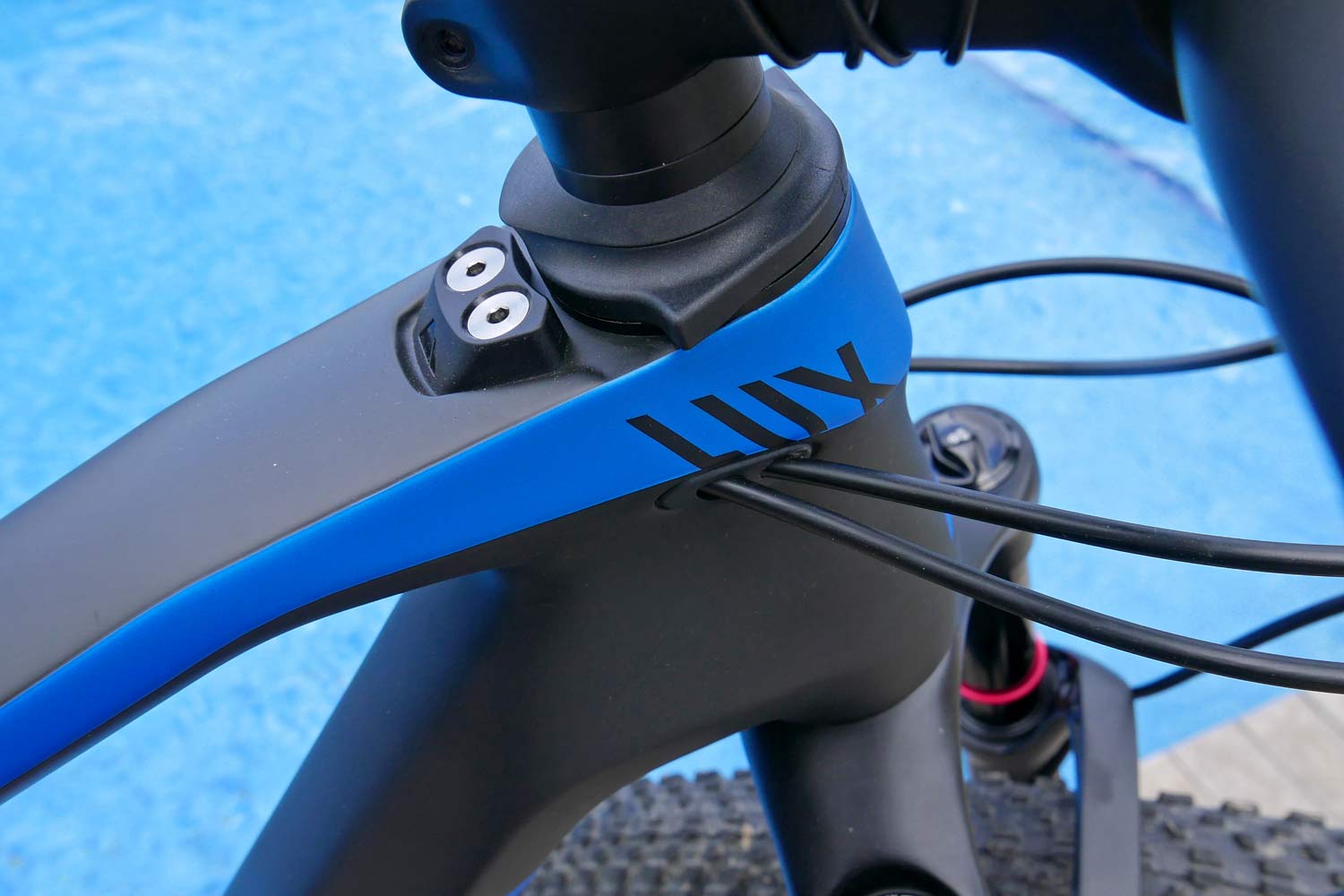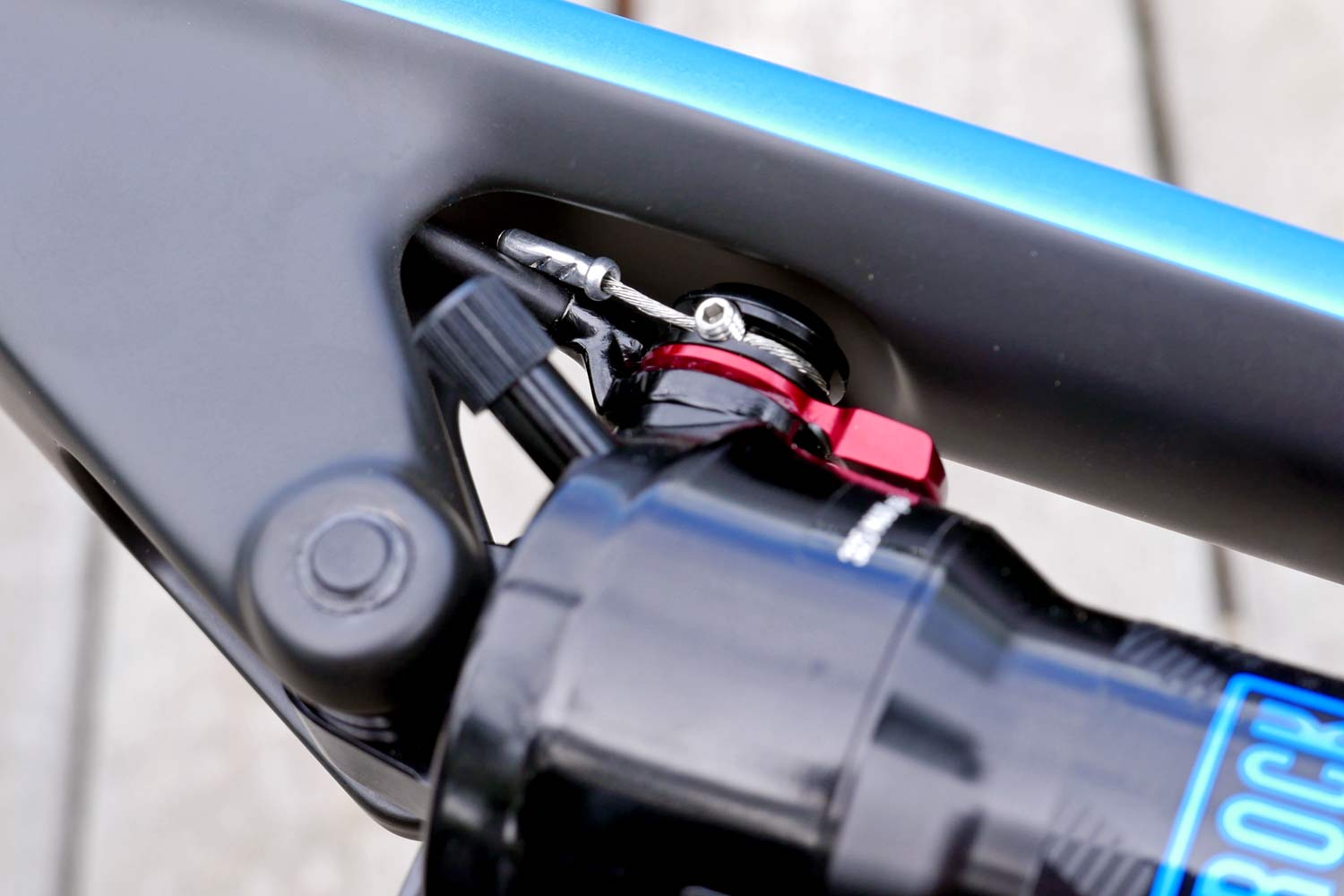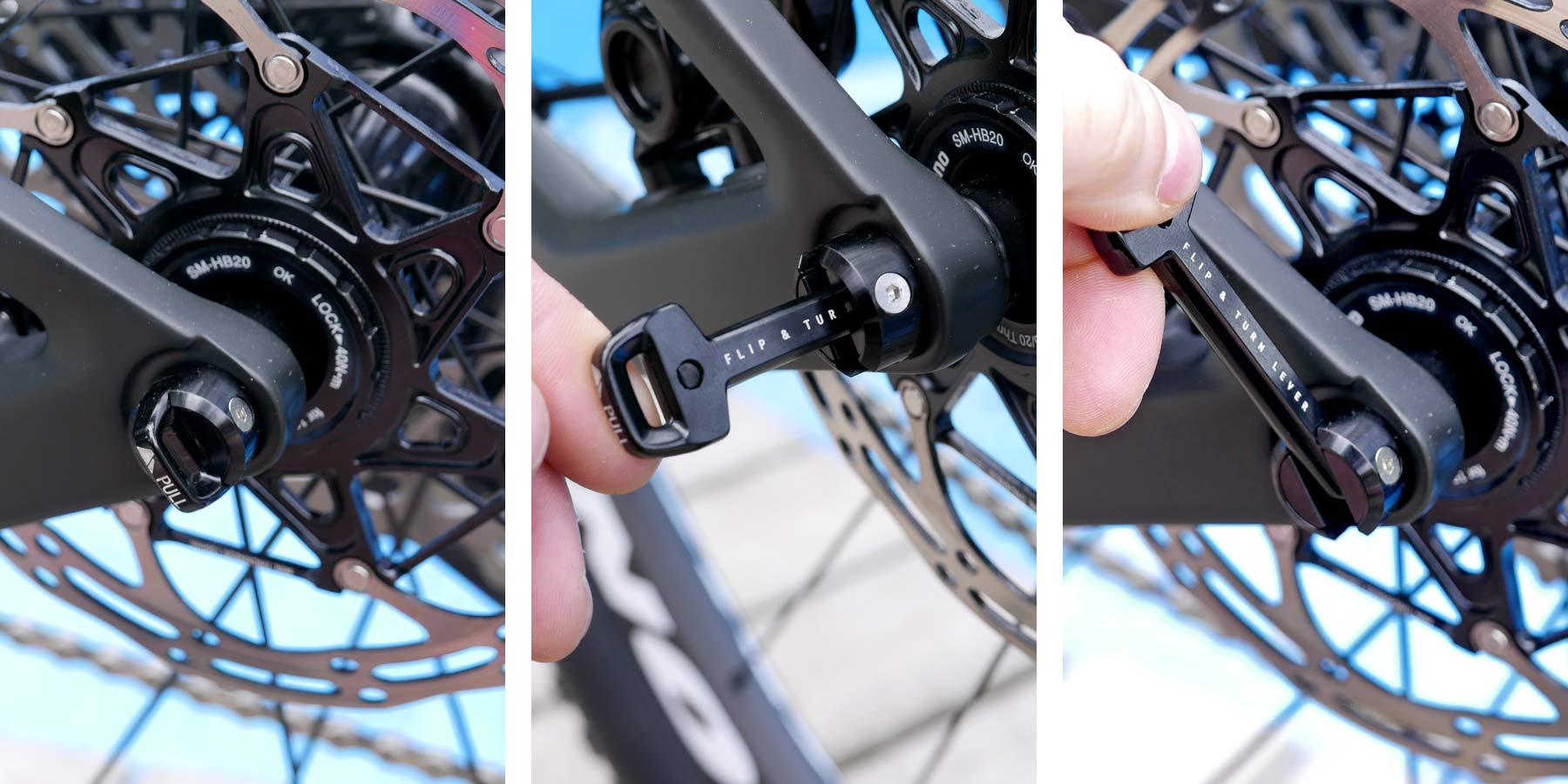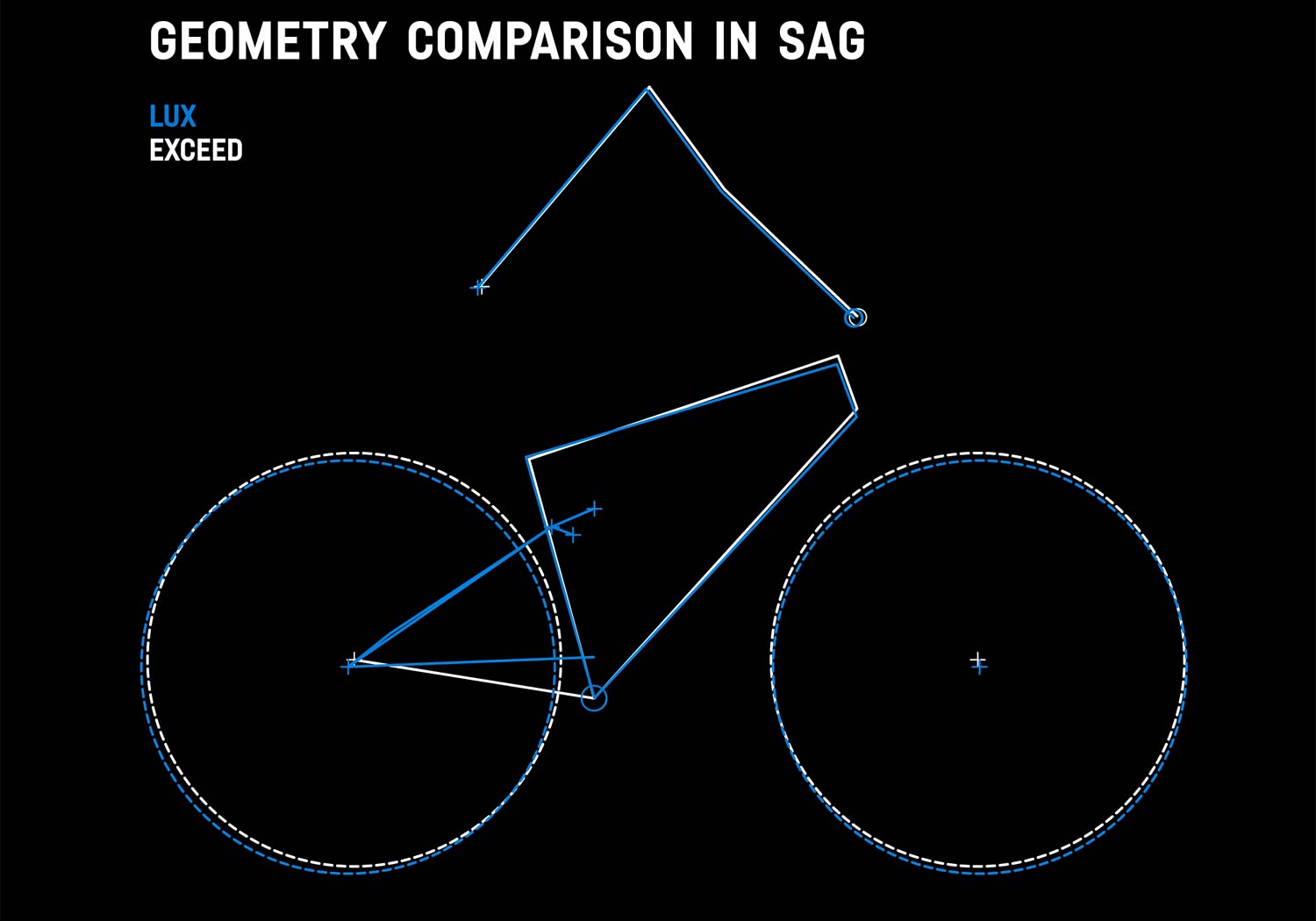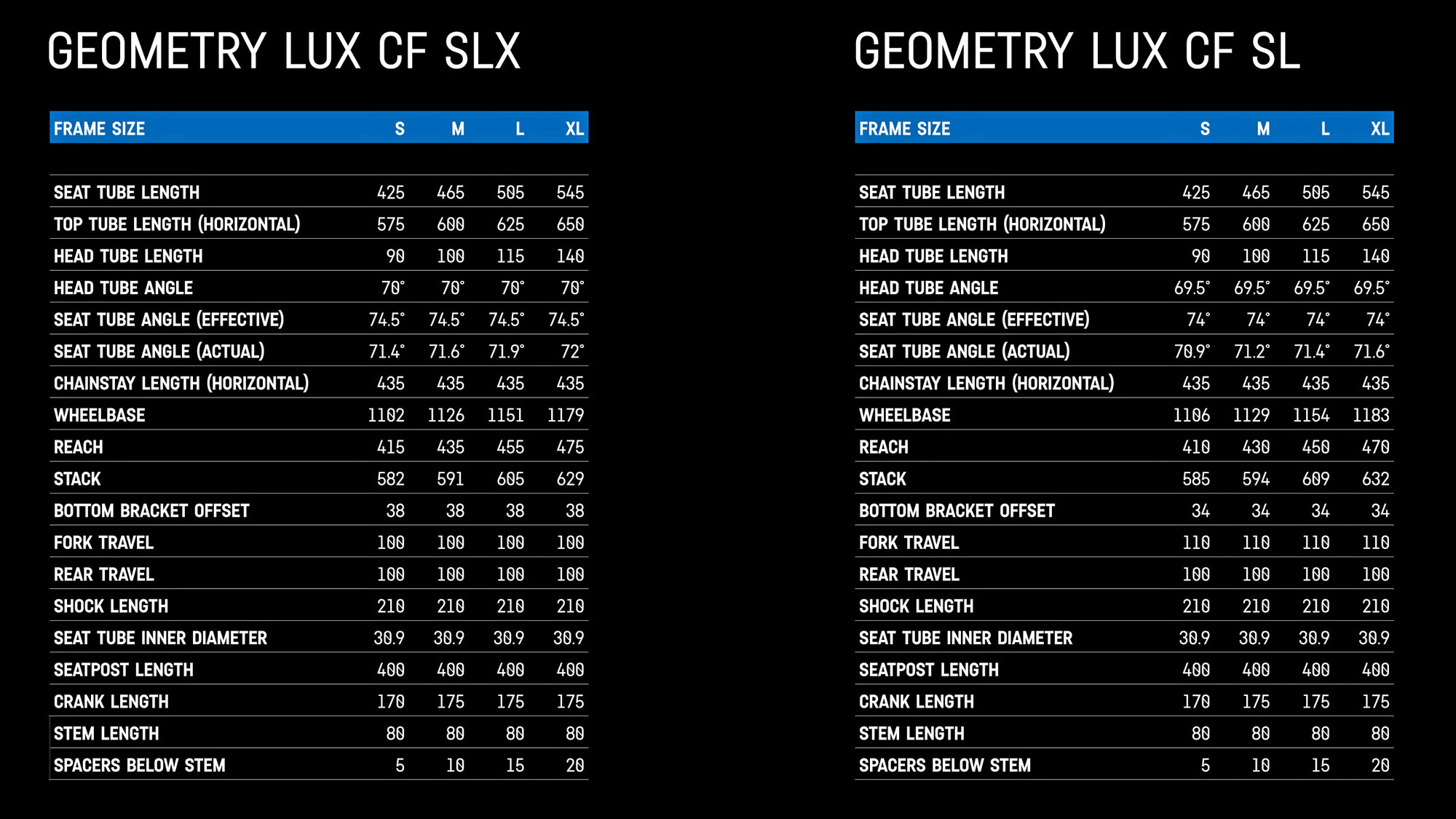Canyon sponsors some heavy hitters when it comes to cross-country & marathon mountain bike racing. With most of their MTB pros racing in rainbow stripes, national champ kits, or at least jerseys adorned with stripes from past championship wins, it was time for their Lux short travel full-suspension XC & XCM bike to get an overhaul.
The 100mm carbon Lux had been a racing focused mountain bike, but the new bike takes it one step further – lighter, more efficient, and capable of taking the beating of top-tier mountain bike racing – following lessons developed on the Exceed carbon hardtail. And the new Lux already is race proven. We got an exclusive first look at the bike raced to podiums at XC World Cups this year already by Pauline Ferrand-Prevot and Mathieu van der Poel. Plus it also was raced to silver at the 2018 Cape Epic by past winners Alban Lakata & Kristian Hynek.
Canyon Lux 100mm carbon 29er XC race mountain bike
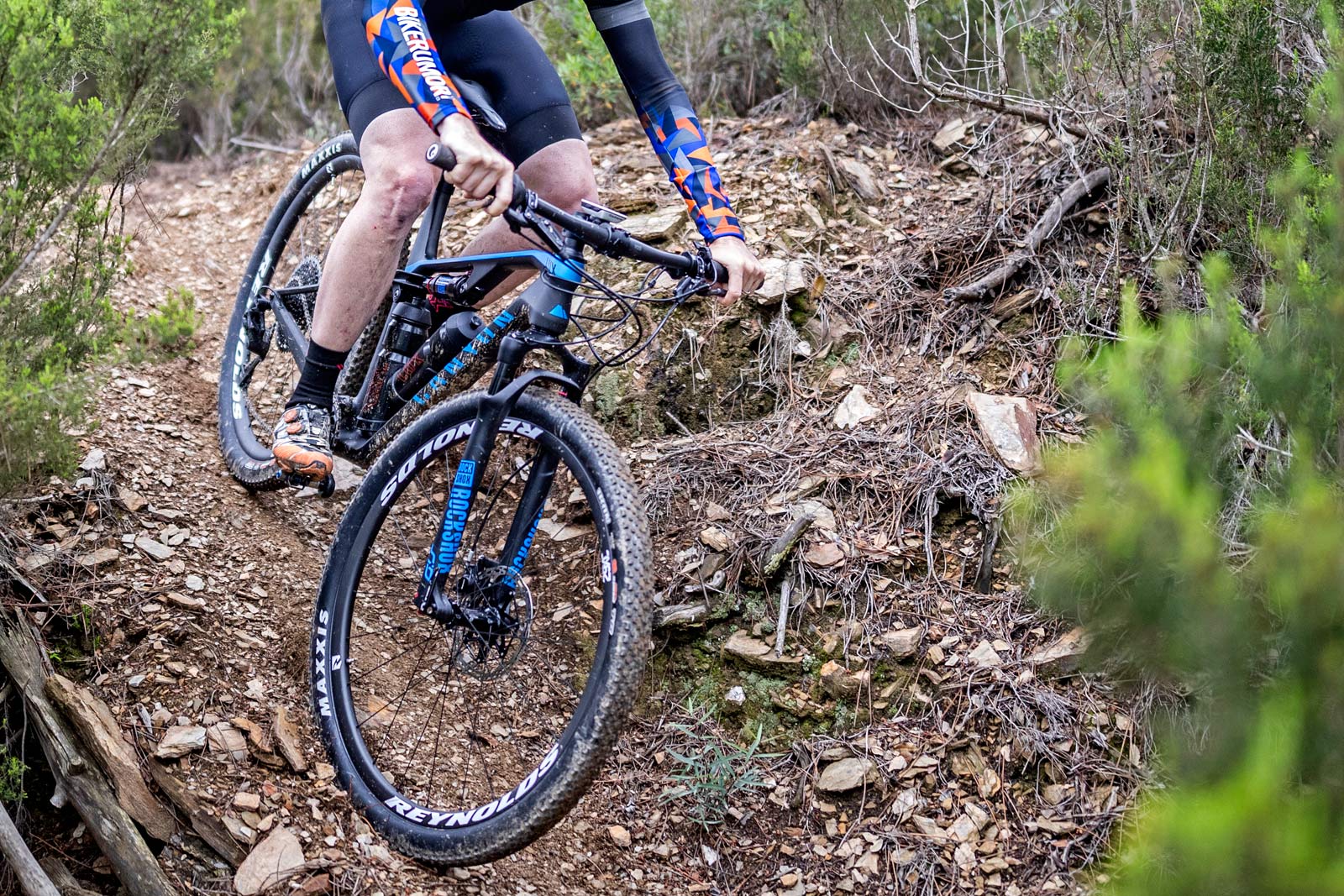
In developing a new Lux, Canyon sought to create a more capable full-suspension bike taking advantage of modern trail-inspired geometry. At times even on technical courses, it seemed their pro riders preferred the Exceed hardtail which got long & slack a few years ago. So Canyon wanted a full-suspension race bike that match that confident feel on the latest crop of technical World Cup courses or even keep racers fresh for a week of repeated beating at a marathon stage race. They even wanted an identical fit & feel to the Exceed hardtail, so racers could switch back and forth seamlessly as courses dictated – without having to get a feel again for the different bike.
Weight was a big issue for a race-ready bike for either short, punchy WC XC climbs or the for the extended climbing of marathons. But at the same time Canyon wanted to fit two water bottles so riders could skip a feed stop, and even run a front derailleur if they preferred the gearing of a double.
Tech Details
With those constraints, Canyon developed a new high single pivot 29er frame design with a flat shock orientation and a pair of links to drive the 210×55 metric shock for 100mm of rear wheel travel. What’s left is an open main triangle that still has room for two 800ml water bottles, even on Pauline’s small frame thanks to Canyon’s optional Sideloader cages, which work in pairs for either right or left access, and are Cape Epic proven. (Not included with a bike, but you get a discounted price when you buy a new Lux.)
New Suspension Design
With a pair of links in the new design – the injection molded carbon outer link that drives the shock, and forged alloy inner link that controls movement of the rear end – the layout also puts less stress on both the main frame and the shock. That let Canyon shed a bit more weight, and also improves shock responsiveness.
The outer carbon link rotates on bushings to deliver low rotation, high load to the shock, while the inner alloy link which rotates a bit more uses a set of four ball bearings with a special low viscosity grease that even resists pressure washing.
The new mixed material rocker links are said to save 63% (70g) over the old Lux, with a total 140g savings in linkages and all their pivot hardware total.
The kinematics of the bike are said to follow on the same triple phase suspension developed on the much longer travel DH Sender. Travel starts out sensitive for small bumps, then quickly becomes stable though mid travel, then progressive at the end.
The shock curve also delivers more anti-squat tuned specifically for the most common single chainring racing setups. The main pivot being centered inline with a 34-38T ring (set perfectly for a 36T and the bigger climbing gears out back), the bike resists bobbing even when you stand up to climb. That means that the suspension has to overcome your weight on the pedals a bit when descending, going back to reiterate this an an efficient XC race weapon.
Versus the previous bike, the new Lux gets a straighter, shorter chainstay to put the power down, plus a wider suspension pivot and wider/stiffer bottom bracket for a more rigid and efficient backbone to the bike. Suspension design stays relatively simple with no pivots out back, continuing the well-proven flex pivot in the carbon seatstays.
Flat mount XC disc brakes
Interestingly the carbon bike opts for the road standard of a flat mount rear disc brake. It apparently saved the Lux 23g and puts braking force more directly into the chainstay, allowing the seatstay to flex.
Not every manufacturer has a flat mount brake for XC. In fact, van der Poel’s new XTR build needed an adapter, and Shimano said they didn’t intend to have a flat mount XTR caliper anytime soon. If you have brakes with a flat mount option (like SRAM or Magura), the frame uses a mount without adapters for 160mm rotors. And the Lux is compatible with flat or post mounts with adapters for 160 or 180mm rotors.
Frame Construction & Finishing Details
The new 29″ wheeled Lux comes in two different carbon varieties – the premium hi-mod Lux CF SLX, and the standard Lux CF SL – both built to last under harsh racing use. The top-end Lux CF SLX claims a medium frame weigh of 1662g including all its metal parts/hardware – claiming to hit under 1985g for the SLX including a Fox Float shock & its remote lockout hardware.
The more affordable CF SL isn’t far behind at 1852g with its standard fibers, but it won’t be available on its own as a frameset (at least for the time being.)
The frames get a number of nice refined little details too. A minimal 4.6g chainguide device bolted into the main pivot – screwed inside another screw – works with 30-38T single rings to keep the chain coming off up top.
The 8.2g rubber chain stay protector is even super light & extra quiet thanks to an open air chamber design that sits high off the stay.
The frame uses the same IPU impact protection unit behind the headtube on the toptube from Canyon carbon hardtails to stop the bars from over rotating in a crash. It’s also easy to remove as we saw on some pro bikes, especially those of the #slamthatstem persuasion.
The new Lux also gets internal cable routing, with bonded internal plastic guide tubes from the dropouts through the chainstays and poking into the large open downtube. You just install cables from the rear, then foam tubes inside downtube keep rattling noise at bay.
Internal routing includes shock remotes on bikes at all levels, with special remote actuators on the shocks to fit close & tight into the frame’s recess, while still retaining full shock rebound adjustability. No compatibility with the ever-looming Fox Live valve, as Canyon still sees it as too complicated for XC for now. Same thing with Di2 – no specific spot for a battery or extra wiring ports as without a front derailleur it is less relevant for XC racing.
The Lux also gets Canyon’s Quixle tool-free QR thru-axle design in the back. The lever of the thru-axle slides neatly into the axle, out of the way tool-free.
Modern XC Race Geometry
With the Exceed as the target, the new Lux was designed to mimic the position of the hardtail. Geometry isn’t actually identical because of how a full-suspension moves through rear wheel travel. So the Lux CF SLX in sag is actually 0.5° steeper than hardtail with a 70° headtube. Versus the old Lux, the new bike gets 20mm longer reach, 15mm shorter chainstays, and short 80mm stems on all sizes.
There is also a bit of geometry difference from the new Lux CF SLX to the lesser carbon Lux CF SL. While the frames are the same out of the mold, the SL bikes all get spec’ed with slightly longer 110mm travel forks, vs. 100mm on the SLX. Canyon’s thinking is that the SLX gets the shorter fork for more XC race feel, while the SLs are more likely to do more general trail riding and could benefit from the extra 10mm of fork travel and the 0.5° slacker handling that they get back.
Pricing & Availability
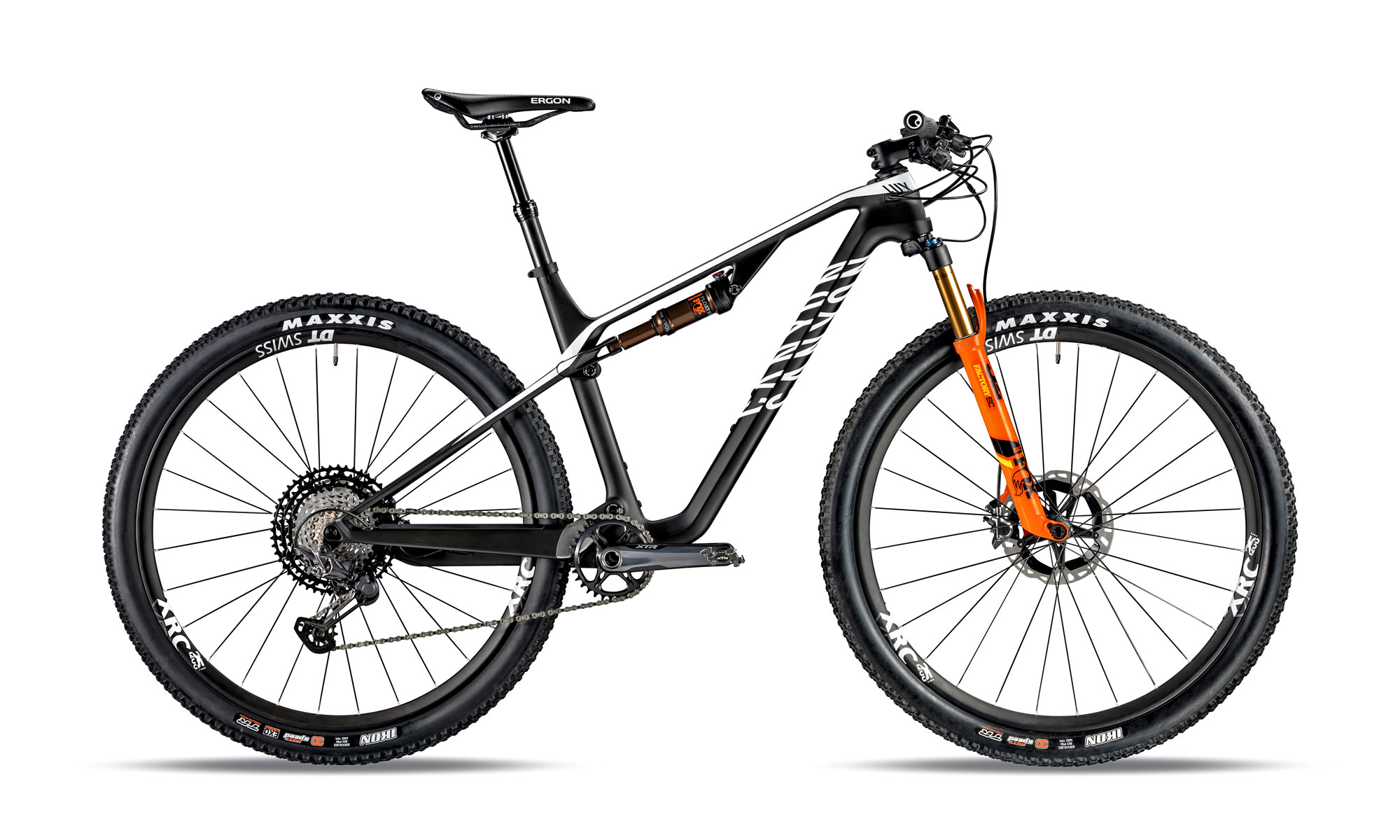 The new Lux comes in six different complete builds – all with 1x drivetrains – in two different carbon spec levels, and all in four frame sizes. Plus, there is a frameset option just for the top CF SLX model. Canyon says that most of the size/color/build options should be available worldwide within a week or two.
The new Lux comes in six different complete builds – all with 1x drivetrains – in two different carbon spec levels, and all in four frame sizes. Plus, there is a frameset option just for the top CF SLX model. Canyon says that most of the size/color/build options should be available worldwide within a week or two.
Check out our separate Spec & Pricing article for the full breakdown, to see if you should opt for new XTR 1×12, and whether your wallet will allow.
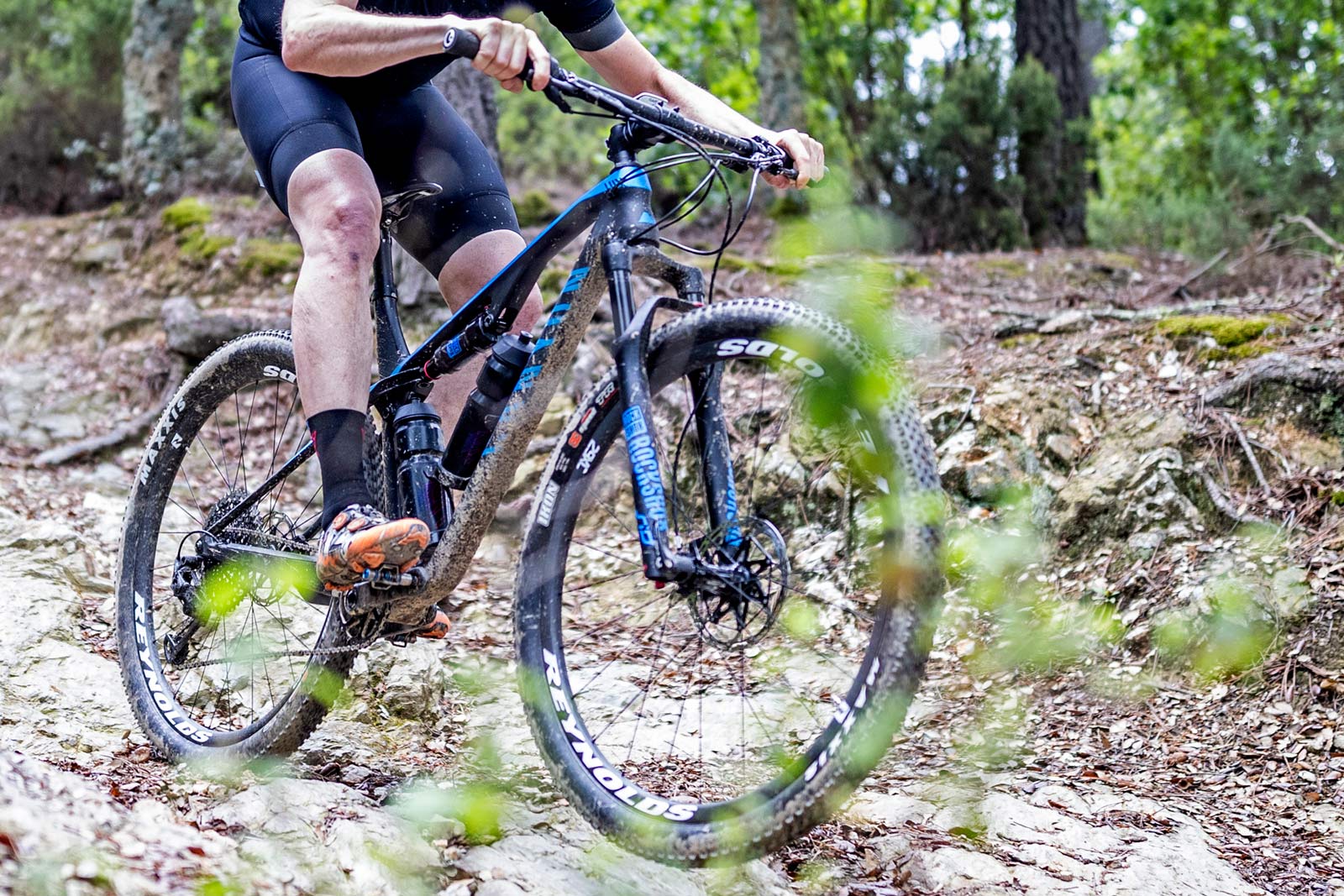
Then, stay tuned later this week for our first ride impressions on a Lux CF SLX 9.0 Pro Race that I rode with some of Canyon’s pro riders a few weeks back.
